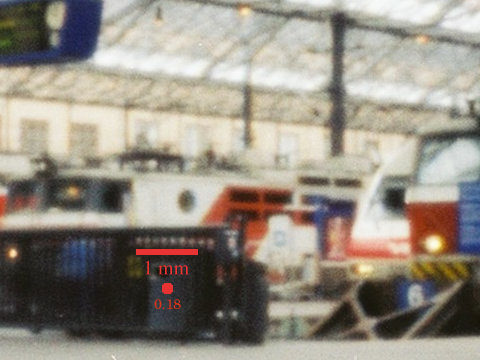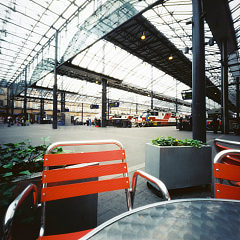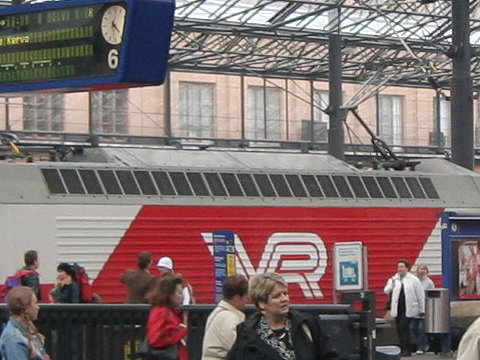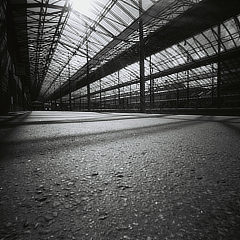About Pinhole Image Quality
Veijo VilvaFor most pinhole photographers the technical quality of their pinhole photographs isn't the most important thing. However, the image quality obtainable with a properly designed medium or large format pinhole camera can be surprisingly high and sometimes even exceed the photographic expectations of most people. A 5.25" x 5.25" digilab print of a 2.25" x 2.25" pinhole image can be about as sharp as sharp can be at the 300dpi resolution which for most people is the norm today. Larger prints are, of course, soft to quite soft but in a way which many people find pleasant or even soothing. I have rather nice 13" x 13" prints at 254dpi.
Resolution
Here is an 8mm x 6mm section from a 54mm x 54mm crop (3260 x 3260 scan, 10Mpixel) of a photo I took with my Zero 2000 6x6 pinhole camera (f = 25mm, f /138). An uncropped 56mm x 56mm frame would be about 3380 x 3380, slightly exceeding a maximal square crop from the full resolution frame of the 16Mpixel Canon 1Ds Mark2, i.e. a 3328 x 3328 section of the 4992 x 3328 full frame. Of course, photos taken with a 1Ds are sharper, have less noise and a better local contrast but may also at times display artifacts absent from a pinhole photo. (There is a similar test photo in the DPReview preview of the 1Ds Mark2, the fourth photo in the series.)Note: it would be necessary to have an 11mm lens on the 1Ds to cover the same (square cropped) angle of view.


I've drawn a 1mm long red line on the picture. There are seven quite thick line pairs above the red line, and it is quite obvious that the camera can resolve rather more than 10 lp/mm. The smallest visible details are quite a lot smaller than the 0.18mm pinhole. The scanning resolution happened to be roughly four times the theoretical f /138 line pair resolution, which seems adequate for quite thin vertical and horizontal lines but not always for the thinnest slanted ones which are clearly discernible on the negative. This observation is in agreement with the Image Detail article by R.N. Clark. Displayed at a resolution of 730 x 730, the photo would pass as a pretty good "normal" one. The image quality can often be enhanced if one isn't a purist, and I certainly am not one.
|
Below are roughly corresponding pictures (a crop and a downscaled photo) taken
with a Zenitar-M 2.8/16mm fish-eye lens mounted on a Canon EOS 350D,
8 Mpixels (3456 x 2304), not quite as wide angle and not rectangular (e.g.
the pillars look quite curved) but certainly very much sharper.
|





